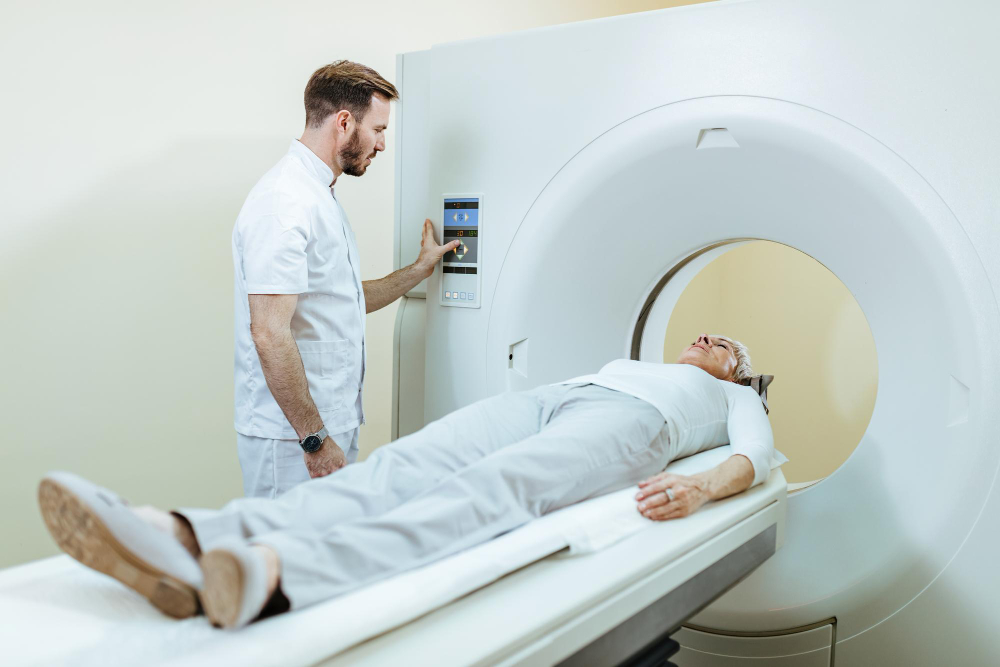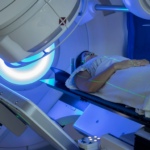
Radiation therapy is a crucial component of cancer treatment, utilizing high-energy radiation to destroy cancer cells or prevent their growth. It is a localized treatment approach that targets specific areas affected by cancer. In this article, we will explore two common types of radiation therapy: external beam radiation and brachytherapy.
External Beam Radiation Therapy:
External beam radiation therapy is the most widely used form of radiation therapy. It involves the delivery of radiation from an external machine directly to the cancer site. The radiation is precisely targeted at the tumor, minimizing exposure to surrounding healthy tissues.
The treatment process starts with careful planning, which includes imaging scans, such as CT scans or MRI, to precisely map the tumor’s location and shape. This information helps determine the optimal angles and doses of radiation required for treatment.
During treatment sessions, the patient lies on a treatment table, and a machine called a linear accelerator delivers the radiation beams to the predetermined target area. The treatment is usually painless and lasts for a few minutes. Multiple sessions, known as fractions, are scheduled over a period of weeks to allow healthy tissues to recover while effectively targeting cancer cells.
External beam radiation therapy is highly effective for treating various types of cancer, including breast, lung, prostate, and head and neck cancers. It may be used as the primary treatment, in combination with other therapies like chemotherapy or surgery, or as palliative care to relieve symptoms and improve quality of life.
Brachytherapy:
Brachytherapy, also known as internal radiation therapy, involves the placement of radioactive sources directly into or near the tumor site. This allows for the delivery of a high dose of radiation to the cancer cells while minimizing exposure to surrounding healthy tissues.
There are two main types of brachytherapy are temporary and permanent.
Temporary Brachytherapy: In temporary brachytherapy, radioactive sources are temporarily placed within the body for a specific period. This can be done through various techniques, such as intracavitary brachytherapy, where the radioactive sources are inserted into body cavities like the uterus or vagina, or interstitial brachytherapy, where the sources are inserted directly into the tumor tissue. After the prescribed dose is delivered, the sources are removed.
Permanent Brachytherapy: In permanent brachytherapy, also known as seed implantation, small radioactive seeds or pellets are permanently placed within the tumor or tumor bed. Over time, the radioactive material gradually loses its potency, remaining in place without the need for removal.
Brachytherapy is commonly used in the treatment of gynecological cancers, prostate cancer, and certain head and neck cancers. It offers several advantages, such as delivering a high dose of radiation directly to the tumor, reducing the overall treatment time, and minimizing radiation exposure to nearby healthy tissues.
The selection of radiation therapy, whether external beam or brachytherapy, depends on various factors, including the type and location of the cancer, the stage of the disease, and the patient’s overall health. A multidisciplinary team of radiation oncologists, medical physicists, and radiation therapists work together to create a personalized treatment plan that optimizes the benefits while minimizing potential risks.
Summary:
Radiation therapy plays a critical role in cancer treatment. External beam radiation therapy delivers radiation from an external machine, precisely targeting the tumor site, while brachytherapy involves the placement of radioactive sources either temporarily or permanently within or near the tumor. These techniques offer effective treatment options for various types of cancer, providing hope and improved outcomes for patients undergoing radiation therapy.
When considering radiation therapy, it is crucial to choose a reputable and dedicated cancer clinic that provides comprehensive care and personalized treatment. In this regard, Cancer Care Pune stands as a renowned cancer clinic committed to delivering exceptional care to patients. With a team of experienced radiation oncologists, medical physicists, and radiation therapists, Cancer Care Pune offers state-of-the-art radiation therapy services.
Cancer Care Pune understands the importance of individualized treatment plans and employs advanced technologies to ensure precise and effective radiation delivery. Their multidisciplinary approach ensures that patients receive holistic care and support throughout their radiation therapy journey.




